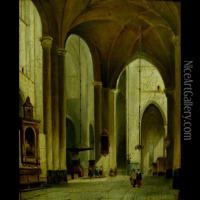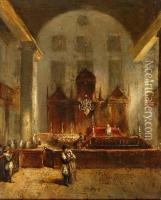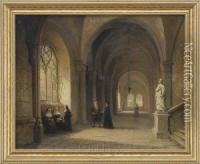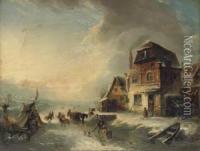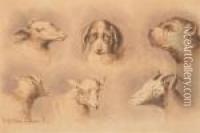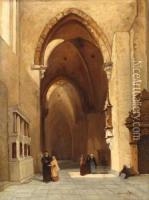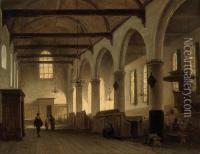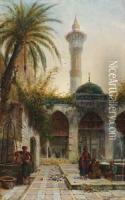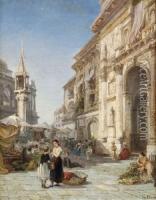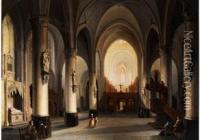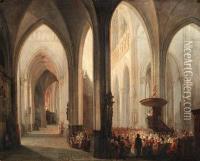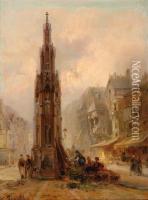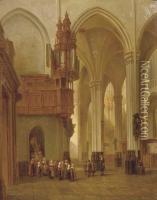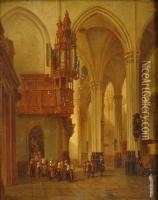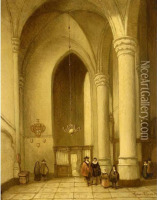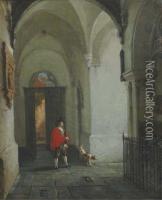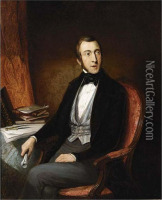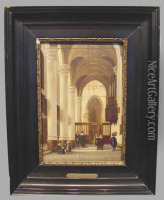Jean-Baptist Tetar Van Elven Paintings
Jean-Baptiste Tétar van Elven was a 19th-century Dutch painter, known for his portraits, genre scenes, and historical paintings. Born on March 31, 1828, in Paris, France, he was the son of the Dutch artist Paulus Constantijn la Fargue van Elven and the brother of the artist Pierre Tetar van Elven. Despite being born in France, he is often associated with Dutch art due to his family's origins and his contribution to Dutch cultural heritage.
Jean-Baptiste's artistic journey began under the tutelage of his father and later, he further developed his skills at the Royal Academy of Art in The Hague. His style was influenced by the Romantic movement, which was prevalent during the early part of his career. Tétar van Elven's works often reflect a keen interest in historical accuracy, and he was known for his meticulous attention to detail, particularly in his depiction of historical costumes and interiors.
Throughout his career, Tétar van Elven enjoyed a moderate level of success. He exhibited his works at various important venues, including the Salon in Paris. His paintings were appreciated for their narrative quality and their faithful representation of historical and domestic scenes. As a portrait artist, he also received commissions to paint members of the bourgeoisie and nobility.
Aside from his work as a painter, Tétar van Elven was involved in the preservation of Dutch historical monuments, contributing to the early stages of the cultural heritage movement in the Netherlands. His interest in history extended beyond his paintings, as he was an active member of several historical and artistic societies.
Jean-Baptiste Tétar van Elven's work remains part of Dutch and French art collections, and his contributions to the art world are recognized by art historians, particularly those specializing in 19th-century European art. He passed away on April 12, 1908, in The Hague, leaving behind a legacy that reflects his passion for history and art.
